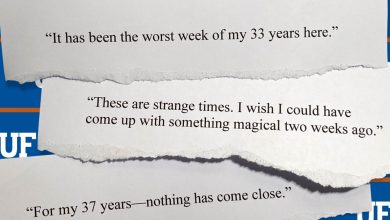Colleges Are Investing in Student Mental Health. But ‘There’s Still a Long Way to Go,’ Survey Finds.

Though colleges are taking steps to address students’ mental-health needs on campus, student-affairs officials say that demand for treatment continues to exceed existing resources.
That’s according to the findings of a new survey of student-affairs professionals at more than 100 colleges conducted by Naspa: Student Affairs Administrators in Higher Education and Uwill, a teletherapy company that works with colleges.
Nearly all respondents said college presidents at their institutions viewed mental health as a priority, and that students had become more comfortable discussing their mental health over the last five years.
“There’s less stigma around seeking help, especially in the student population, and that is unbelievable to us,” said Michael London, Uwill’s chief executive. “Schools are responding, and they’re doing a lot of the right things from what we can see — but there’s still a long way to go.”
While 77 percent of student-affairs leaders said their campuses had increased mental-health services in the last year, they still didn’t think they were doing enough — particularly as more students have become comfortable seeking help.
Eighty-four percent said they believed mental-health funding should continue to increase. Just 4 percent of respondents characterized the availability of mental-health services for students as “extremely strong.”
A majority identified the increased severity of students’ mental-health issues as the single greatest challenge for colleges in this realm. Overall, 72 percent said the trajectory of campus mental health, including of faculty, staff and students, had worsened during the last year.
“There’s not an infinite amount of resources for all of these people who are struggling,” said Erin Andrews, manager of clinical affairs for Uwill. “It’s just creating this backlog.”
The need for more mental-health resources available to students of color is particularly urgent, according to the survey. Just 10 percent of respondents said diversity among counselors is “extremely strong.” The psychology work force itself is overwhelmingly white. The survey also asked about factors that influence students’ decisions to get help, and 21 percent of administrators identified race or ethnicity as a barrier.
“There’s a real desire and need for diverse counselors and it’s really hard to staff that need — because on a larger scale within the country, it’s a really low population of people and there’s a really high demand for them to be practicing with clients,” Andrews said.
Administrators are under pressure to do more, but student-affairs offices are already grappling with increased turnover and burnout. A recent survey by Naspa found that one-third of student-affairs administrators didn’t know if they’d stay in higher ed, and 25 percent weren’t sure they’d recommend a higher-ed career to others. Low salaries and stress were two top factors influencing their views. Duke University’s student newspaper reported on Monday that 200 people have left the university’s student-affairs unit over the past two years.
Andrews characterized the new survey’s results as fallout from the pandemic, which has left students struggling to recover.
“College students are behind where their comparable careers have been in the past,” Andrews said. “They lost time, and that’s crucial time where they’re developing independence and figuring out their personal identity and just learning how to stand on their own feet outside of their family unit.”
Source link






